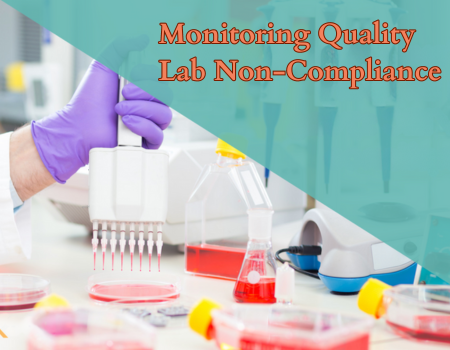Call us: +1-855-202-3299
Email: [email protected]
Monitoring a Quality Laboratory to prevent Non-Compliance.
Speaker: John C. Fetzer
Speaker Designation: Founder and Principal, Consultant Fetzpahs Consulting

Call us: +1-855-202-3299
Email: [email protected]
Speaker: John C. Fetzer
Speaker Designation: Founder and Principal, Consultant Fetzpahs Consulting

Everyone in a laboratory under compliance knows about 3-sigma out-of-control issues. Can the operation be monitored to avoid these? How? This webinar will cover the basic statistics of compliance and non-compliance and how to use a statistical approach to monitor the operation to ensure that it is under control and to see when a problem is arising, but before it is outside of 3-sigma.
Data quality and compliance with a required level of performance are measured by statistical tools. Usually, in compliance, there is a very heavy weighing towards only 3-sigma deviations. But statistics give much more than that. Another sign of being “out of control” is a building situation. These other statistical patterns can be used to trigger preventive actions without the dire consequence of non-compliance.
Compliance under GLP can be difficult. The setting up of a system to monitor the performance of methods and instruments can lessen this. Statistical Process Control (SPC) uses control charts and statistical guidelines to monitor a wide variety of things in the compliant laboratory. These generate a proactive system to assess problems early on and quickly to be.
Non-compliance in laboratory operations can lead to severe consequences, including regulatory penalties, reputation damage, and compromised data integrity.
In the ever-evolving landscape of laboratory standards and regulations, attending this webinar will keep you updated on the latest requirements, ensuring your laboratory remains compliant with industry standards.
Many problems that arise in an analysis result from causes that start small and grow over time. Others result from an unplanned change in a procedure or the performance of an instrument. These manifests themselves into changed patterns in certain measurable variables. The use of statistical methods to assess and monitor certain variables will be covered, highlighting the predictable patterns.
Control charts are based on the distribution of data expected in a laboratory, the Gaussian distribution of occurrences. There are well-defined probabilities for the data. Guidelines for good or unacceptable behavior are well known. The most common of these are the Nelson Rules, in use for over a century. With a wise selection of the variables to monitor, assessing performance can be simple.

Dr. Fetzer has had many roles in compliance under Good Laboratory Practices and ISO 17025. He developed liquid chromatography and physical-property assays for a variety of compounds. He supervised a compliant laboratory for over a decade. He has performed outside audits for "mock" compliance audits. He has been training in this topical area for many years.
Dr. Fetzer's expertise extends beyond academia, having published over 100 peer-reviewed scientific articles, 2 books, and 8 book chapters. He was key in overseeing the Good Laboratory Practices accreditation for a prominent research chromatography laboratory. Additionally, Dr. Fetzer has shared his knowledge by conducting numerous short courses on GLP and ISO 17025 compliance.
Beyond his contributions to the scientific community, Dr. Fetzer offers Analytical Chemistry Consulting Services and Scientific Career Development Consulting services. As an American Chemical Society tour speaker, he has delivered over twenty invited lectures at conferences, universities, and government laboratories, further solidifying his impact in the field.